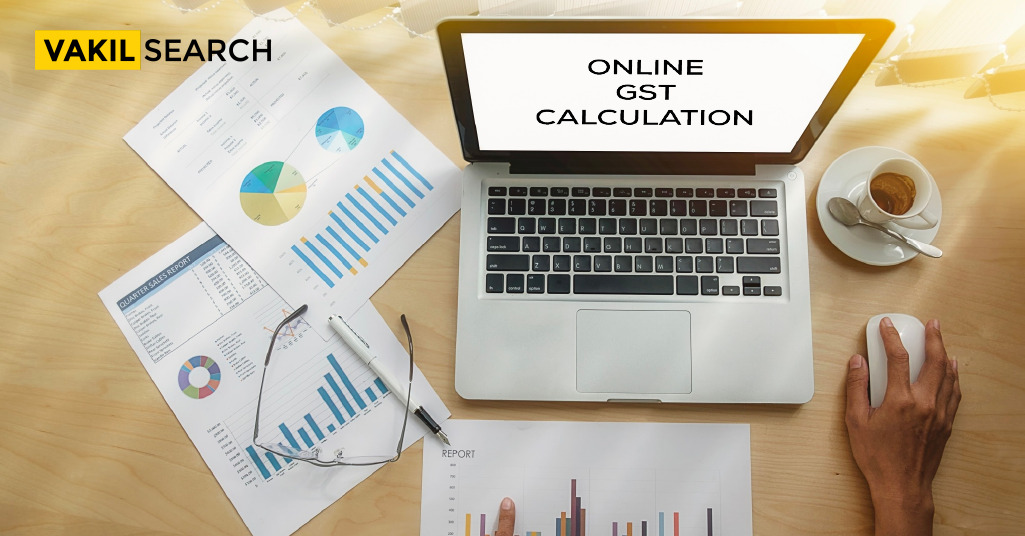Here is a handy guide which explains how you can use the GST calculator seamlessly. Read this blog to know more.
Individuals in India are responsible for a wide variety of taxes, including income tax and property tax. There is just one tax that all consumers of products and services in the country must pay on time: the Goods and Services Tax (GST). Curious as to what the GST tax entails? Learn more about GST, how it’s computed, and why an online GST calculator can be helpful below.
Explanation of GST
The Goods and Services Tax (GST) in India is an indirect tax collected on most purchases made within the country. This tax has multiple steps, beginning with the collection from the consumer and ending with the payment to the government. In India, Goods and Services Tax (GST) replaced previous indirect taxes on July 1, 2017, including Value-Added Tax (VAT) and sales tax. It has been widely followed all across the country now.
As a whole, the existing GST system in India encompasses more than 500 services and more than 1,300 products. The GST does not apply to all products and services. The following table summarises the five most Important GST rate slabs that apply to these products and services:
- 0%
- 5%
- 12%
- 18%
- 28%
Formula for Calculating GST Interest Rate
A uniform method can be used to determine the GST owed regardless of whether GST is factored into the Value of the supply or not. You can use this formula to Calculate if GST is included or not.
If the supplied Value does not include GST
As an example, consider the following formula:
To calculate the GST amount, multiply the supply’s Value by the applicable GST rate per cent.
If the Value of the supply is subject to GST,
The formula applied here is as follows –
Value of supply minus [Value of supply x [100/(100+GST%)]] = GST Amount.
What exactly is a GST calculator?
To quickly and accurately determine the GST amount for any number of products or services, all you need is access to a GST calculator. Taxable goods and services(GST) can be estimated with the help of an online GST calculator, which is available to consumers, vendors, enterprises of all sizes, and wholesalers.
How to use GST Calculator?
This article explains how to use a GST calculator in detail. It may be downloaded for nothing and is highly user-friendly.
- First, type in the final cost of the items or services provided.
- Second, type in the GST rate that should be used for this item or service. Options include 5%, 12%, 18%, and 28%.
- Third, select the ‘calculate’ tab and click the button.
So long! The online GST calculator will use your inputs to determine the total tax due, which will then be broken down into the appropriate categories for Central GST (CGST), State GST (SGST), and Integrated GST (IGST), if applicable. It will help you estimate the total cost of the Bill.
Calculating GST Bill Rates
The Goods and Services Tax (GST) Bill has been called a “landmark bill” in the history of Indian taxes. Implementing this Bill is an effort to reduce instances of “double-taxation” and other taxation-related anomalies. Four measures were passed on March 29, 2017. The official date for full implementation of this Bill specified by the government is July 1 2017. Some goods and services would decrease in price while others would increase. However, a multi-tier tax slab with four different tax rates of 5%, 12%, 18%, and 28% has been proposed rather than the standard single tax slab. This multi-tiered structure is that necessities cannot be charged at the same rate as luxuries.
Despite the significance of this Bill, there are still many questions about how GST would be calculated on individual products and what difference its passage would make. It’s essential to remember that the GST Bill consists of two parts: the Central GST (also known as CGST) and the State GST (also known as SGST), both of which are imposed by the individual states. Each set of fees would be authorised after consideration of income potential and public opinion. Except for the exempted items and services, SGST and CGST will be applied to everything else. The Centre and the States would determine tax rates and taxpayers according to the defined threshold for items and services.
As demonstrated by the case mentioned above, subsuming excise duty benefits the final customer. Service Tax, Subsuming VAT, and Excise commitment results in cost savings for producers, distributors, and retailers. Expenses are going down, so the input tax creditis going down too.
GST Calculator’s Pros:
Some of the most critical gains from employing a GST calculator are as follows:
- Users can calculate a product’s net or gross price based on GST rates.
- It provides precise calculations for SGST, CGST, and IGST, while helping users understand their differences.
- In addition to being a time-saver, the outcomes are also immediate.
- It reduces the possibility of pricing mistakes caused by human error.
- It’s easy to use and facilitates GST calculation with minimal effort.
Conclusion
You can get a feel for the intricacies of the indirect tax system and a sense of your potential tax liabilities by calculating the Goods and Services Tax on various products and services. As you can see, figuring out how much GST is owed on a wide range of goods and services is a breeze with an online GST calculator. Make sure you use this helpful web resource anytime you find yourself in need of it.
Want to know about GST and the GST calculator, then you can get in touch with Vakilsearch for the same. Vakilsearch is undoubtedly a “one-stop-solution” for anyone who is searching for some legal help.



